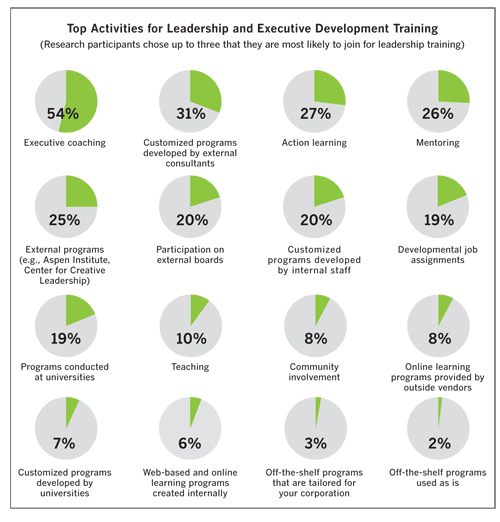March 2014
LEADING INSIGHT
Leadership Trends: Creating a Vision
 The ability to create a vision and rally support around that vision are key leadership qualities. While critical thinking skills remain essential, new research says that the visionary attribute must be elevated within a firm’s culture in order to engage a new generation of leadership.
The ability to create a vision and rally support around that vision are key leadership qualities. While critical thinking skills remain essential, new research says that the visionary attribute must be elevated within a firm’s culture in order to engage a new generation of leadership.
What leadership skills are young professionals lacking the most? Thirty-six percent of research participants revealed that they look for the ability to create a vision and engage others so that they feel ownership and passion. Additionally, 33% cited critical and strategic thinking. Nearly 25% believe that the ability to attract, develop, and retain the quality of talent needed to achieve the firm’s business objects is a top leadership quality.
The study is based on input from 131 medium and large organizations, 34% of which had more than 10,000 employees. The participants represented publicly traded companies (34%), nonprofits (11%), and private companies (56%).
If firm leaders want fresh talent to move into more senior-level positions, they’ll have to refocus how they engage and train high-potential professionals, says Bonnie Hagemann, chief executive officer of Executive Development Associates, which sponsored the research. “This requires the ability to convey the vision to others [and] get employees and customers just as excited about a new direction and opportunities,” she said in a statement. “And it required the ability to engage employees at all levels in the underlying business strategy. Vision without strategy will not get far. And neither will move forward without engagement.”
Survey participants listed the following as top objectives for executive development programs, processes, and strategies: develop capabilities needed to achieve vision and execute strategies (40.8%), increase “bench strength” to ensure replacements for key jobs or succession planning (33.8%), address key business issues and challenges (31.5%), and ensure executive talent needed to support growth.
Firms must implement strategies and policies that will facilitate leadership development activities in a manner that efficiently uses time and resources, both human and financial. The design of these activities must be carefully linked to marketplace challenges and business objectives as well as receive the full backing from key stakeholders. There are several strategies that can be deployed to change the company’s culture to help foster this leadership development, including the following:
-
Coaching and Mentoring—All organizations have current and retired leaders who, over the course of their careers, have articulated a strong vision and have the ability to convey it to others. These leaders should be recruited to serve as coaches and mentors to current and upcoming leaders.
-
Training—Executive training programs should be expanded to focus on how to inspire and engage others. These capabilities can be built into business scenarios and simulations to link storytelling and practice.
-
Tapping the Vision ofGeneration Y—Creating a vision means looking ahead to the ideas that will capture the imagination of new generations of employees and customers. Firms have a powerful thought partner in their Generation Y employees. These employees can provide valuable insight into the kind of products and services demanded by their consumer market.
Access the report Trends in Executive Development 2014 at www.executivedevelopment.com



 Volunteering at NSPE is a great opportunity to grow your professional network and connect with other leaders in the field.
Volunteering at NSPE is a great opportunity to grow your professional network and connect with other leaders in the field. The National Society of Professional Engineers (NSPE) encourages you to explore the resources to cast your vote on election day:
The National Society of Professional Engineers (NSPE) encourages you to explore the resources to cast your vote on election day:




